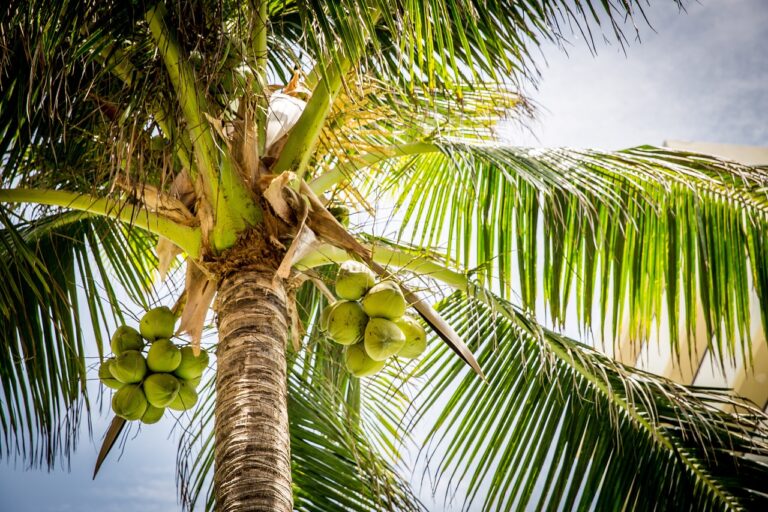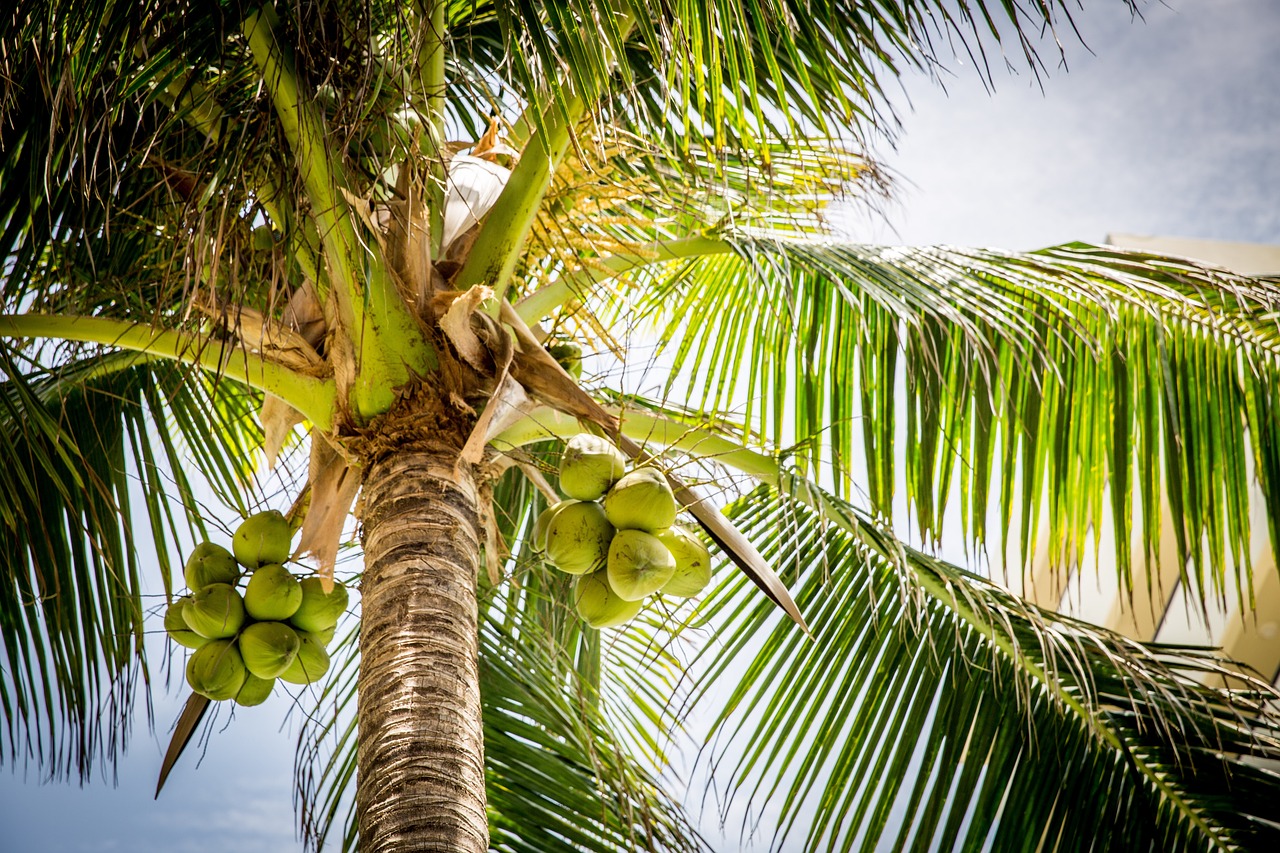The coconut tree (Cocos nucifera) is an iconic symbol of tropical paradise and a valuable source of numerous products, from refreshing coconut water to versatile coconut oil. In this blog post, we will take a closer look at the life cycle of a coconut tree, from its initial growth as a sapling to its incredible transformation into a fruit-bearing wonder.

Stage 1: Germination and Sprouting The life cycle of a coconut tree begins with the germination of a coconut seed. A mature coconut falls from the tree, and under the right conditions, the embryo within the seed starts to develop. It can take anywhere from two to six months for the seed to germinate and produce a shoot, which eventually emerges from the coconut husk as a sprout.
Stage 2: Sapling Development Once the shoot emerges from the coconut husk, it starts to grow into a sapling. The sapling’s first leaves, known as eophylls, are usually long and slender. Over the course of a few months, the sapling develops a more robust stem and begins to produce its characteristic pinnate leaves, also known as fronds.
Stage 3: Vegetative Growth During the vegetative growth stage, the coconut tree continues to grow taller and stronger. The trunk thickens, and the crown of the tree expands as new fronds emerge. This stage can last for several years, with the tree focusing its energy on structural development rather than fruit production.
Stage 4: Flowering and Fruit Production At around 5-7 years of age, a coconut tree starts to produce flowers. The flowers, which grow in clusters known as inflorescences, are a mix of male and female flowers. The male flowers are more abundant and usually open first, while the fewer female flowers develop into fruits once pollinated. The fruit-bearing stage of a coconut tree can last for several decades, with the tree producing up to 50-200 coconuts per year.
Stage 5: Maturity and Decline A healthy coconut tree can remain productive for 40-50 years, sometimes even up to 80 years. As the tree ages, its fruit production may decrease, and the trunk may show signs of wear, such as a lean or a bent crown. Eventually, the tree reaches the end of its life cycle and dies, making way for new trees to take its place.
The life cycle of a coconut tree is a testament to the resilience and adaptability of this tropical wonder. From a germinating seed to a fruit-bearing giant, the coconut tree undergoes an incredible transformation, providing us with a plethora of useful and nutritious products along the way. By understanding the life cycle of a coconut tree, we can better appreciate its value and ensure its proper care and cultivation for generations to come.


Leave a Reply